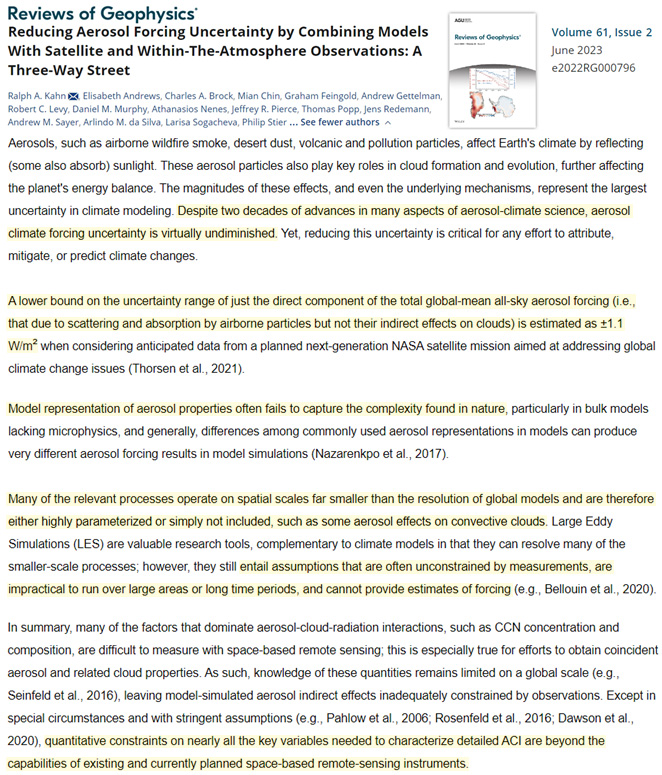“Despite two decades of advances in many aspects of aerosol-climate science, aerosol climate forcing uncertainty is virtually undiminished. Yet, reducing this uncertainty is critical for any effort to attribute, mitigate, or predict climate changes.” – Kahn et al., 2023
According to a new study, the lower-bound uncertainty in natural aerosol forcing from wildfire smoke, desert dust, volcanic and pollution particles – not including the aerosol-induced cloud formation effects modulating Earth’s radiation budget – is 2.2 W/m² (±1.1 W/m²).
“A lower bound on the uncertainty range of just the direct component of the total global-mean all-sky aerosol forcing (i.e., that due to scattering and absorption by airborne particles but not their indirect effects on clouds) is estimated as ±1.1 W/m²”
To put this uncertainty estimate into perspective, it takes 10 years of CO2 concentration increase (22 ppm) to produce a surface forcing of 0.2 W/m² – and this is only for clear-sky, or an imaginary world in which no clouds exist (Feldman et al., 2015). CO2 forcing over a span of a decade is thus 10 times smaller than the lower-bound uncertainty in natural aerosol forcing.

Image Source: Kahn et al., 2023
Climate models don’t have the resolution to simulate aerosol forcing effects on climate.
“Model representation of aerosol properties often fails to capture the complexity found in nature, particularly in bulk models lacking microphysics, and generally, differences among commonly used aerosol representations in models can produce very different aerosol forcing results in model simulations.”
Because they cannot effectively constrain aerosol contributions to climate forcing, especially in aerosol-cloud interactions (ACI), many global climate models simply neglect or don’t include relevant aerosol processes.
“Many of the relevant processes operate on spatial scales far smaller than the resolution of global models and are therefore either highly parameterized or simply not included, such as some aerosol effects on convective clouds.”
“[Q]uantitative constraints on nearly all the key variables needed to characterize detailed ACI are beyond the capabilities of existing and currently planned space-based remote-sensing instruments.”
Apparently we are expected to remain unskeptical about the popular claim that we humans can determine what happens to the global climate with our daily living activities despite glaring attributional uncertainties.





Recent Comments